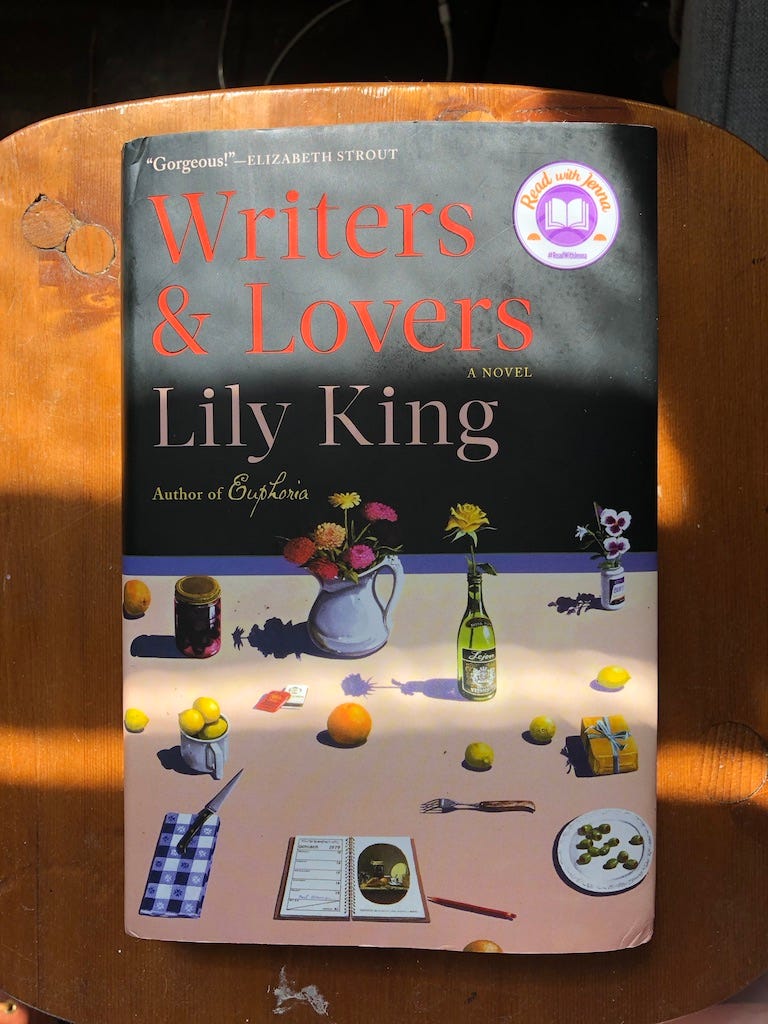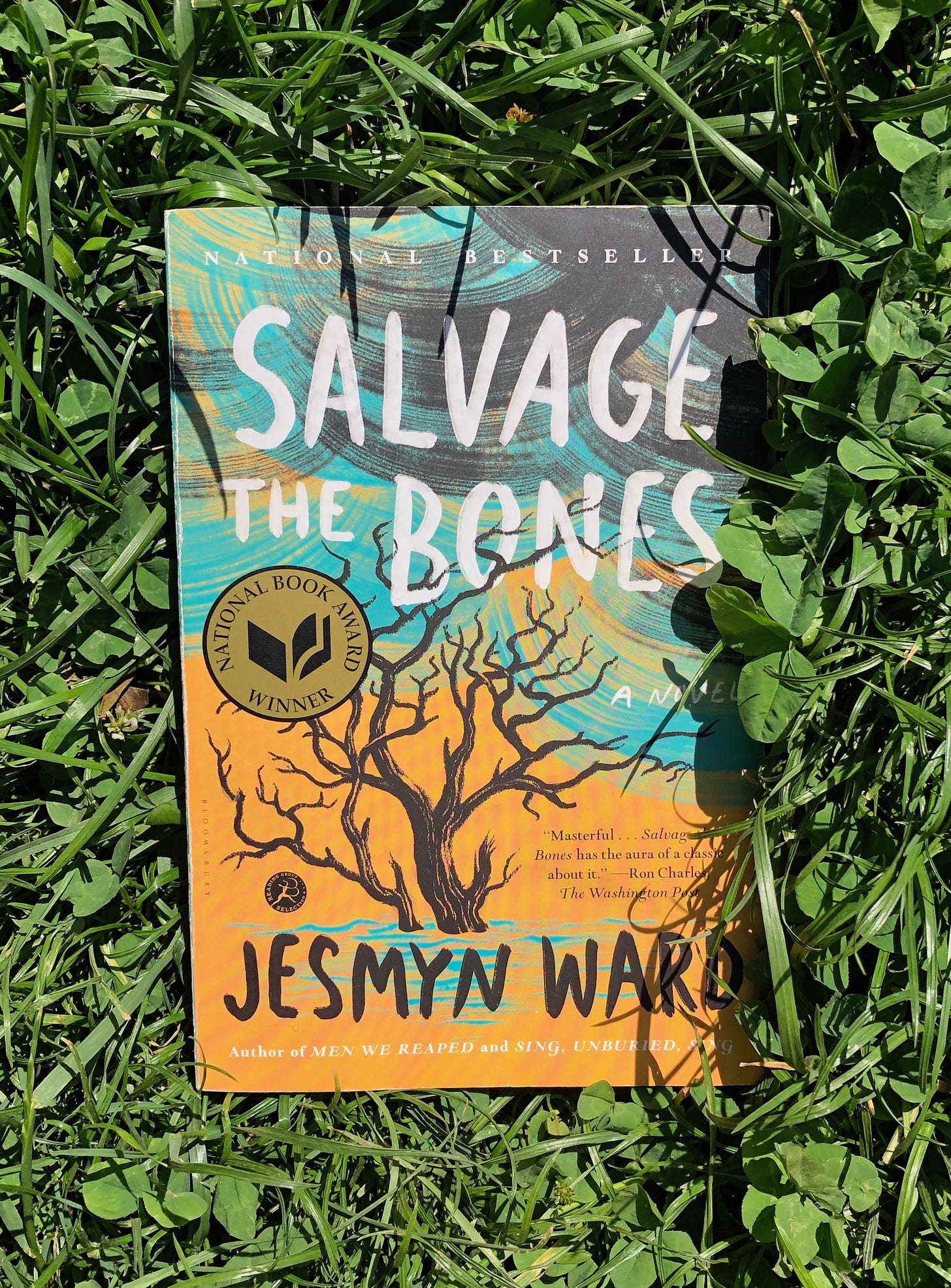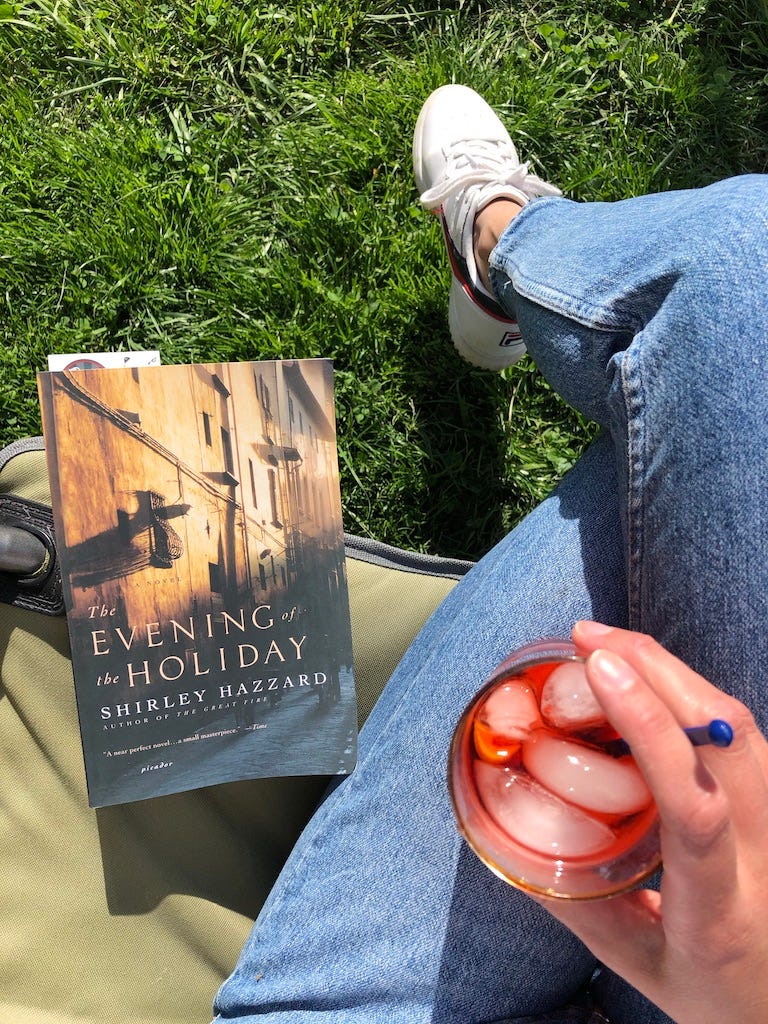Shirley Books' First Reading Roundup
Something Old, Something New, Something That Is Neither But Kind of Both
Maybe it’s something about the way time is (or isn’t) working these days. But back in a previous era, a.k.a. April, when I started the books below, I got all quantum leap-y and began approaching my reading list in a new way: one new book, one old, one somewhere in between. I’m calling the categories Current, Contemporary, and Yore (as in, days of).
It’s a simple organizational technique, but because “organization” isn’t exactly my middle name (that’s “Ann” because I come from truly creative stock), I feel like it gives me the aura of someone who knows what she’s doing, someone who is educating herself—someone with A Method. Then again, maybe it doesn’t. But I like this new way of reading, so I’m gonna stick with it.
Care to join? All you need is your mind… and also the three books below.
CURRENT:
Writers & Lovers, by Lily King
March 2020

To be honest, I wouldn’t normally go for a book with a somewhat fluffy title and a still life on its cover. But a dear friend with impeccable taste who’s a damn good writer herself (hi, April!) recommended it on her social medias by pulling out the following line: “Most of Muriel’s friends are writers, real writers, not like my old friends who got over it like the flu,” which made me chuckle, and then other friends whose taste and words I admire as well were all, “I love Lily King!” or, “I’m about to read that too!” So, not really knowing what I was doing, I chimed in, “Me three!”—and I’m happy I did. Yes, this book is on the lighter side, but it feels kind of like a hug, which felt nice during a time when we weren’t allowed to give or receive those. (Are we now? No one knows.)
Ostensibly, the novel’s about a 31-year-old woman named Casey who really wants to be a writer even though she’s battling debt, doubt, grief, lack of health insurance, etc. (She also has love interests, hence the title.) Books about writers can often feel too knowing or smug, but not this one. The best part of Writers & Lovers is that it name-drops real authors frequently and pointedly—I counted 52 instances, because I do things like that. Some of the references are standard fare, but others (I’m looking at you, entry at the bottom of this newsletter!) are delightful and surprising and will feel like personal recommendations. Come for the lively observations, stay for the diegetic reading list!
You’ll like it if you like… its lines:
His fellowship ended, and he went home to Barcelona. I went to an MFA program in Pennsylvania, and we wrote each other love letters until I started dating the funny guy in workshop who wrote gloomy two-page stories set in New Hampshire mill towns.
(Lol.)
He calls me his waif, his down-on-her-luck waitress, but he takes it all lightly. In fact, Holly Golightly is one of his names for me. If we lived together I would expose myself as the blighted Jean Rhys character I really am.
(Double lol. Also, read Jean Rhys!)
He asks what I read when I was in high school, and I tell him that I was assigned the standard fare of The Catcher in the Rye and A Separate Peace, Updike and Cheever stories, tales of boys being disillusioned by humanity, but on the side my mother was supplying me with Wharton and Didion and Morrison.
(Double lol, followed by intense jealousy.)
CONTEMPORARY:
Salvage the Bones, by Jesmyn Ward
2011

“I just finished a book last night that gutted me.” That’s the text I sent a friend who asked for a book recommendation the morning after I turned the final page of Jesymn Ward’s Salvage the Bones. The winner of the 2011 National Book Award (Ward won again in 2017 for Sing, Unburied, Sing), Bones is the kind of book that you want to tell everyone you know to read, while giving them a warning in the next breath. It’s beautiful and violent, contemporary and classic, infinitely readable and heartbreakingly sad with a narrative that lingers long after the last page.
The book tells the story of Esch, its narrator, who’s 15 years old and lives in Mississippi as the only girl amongst three brothers and her father. Esch’s father is largely absent after her mother died giving birth to the youngest brother, now 7. Esch discovers she’s pregnant early in the novel. The book’s opening scene describes her brother Skeetah’s beloved pit bull China giving birth to a litter of dogs who will be raised to fight—if they survive. Oh, and the book feels like a countdown, taking place over just 12 taut days—the ones leading up to Hurricane Katrina and its immediate aftermath. In reviews at the time, some critics suggested Ward relies too heavily on metaphors. I disagree; Ward writes like everything’s connected, and it is. Poverty and race, dog fights and human battles, big brothers and little sisters, dead but present mothers, alive but distant fathers, tough love and tenderness, air, water, life, death. It’s one of those books that seeps into your psyche the way the red Mississippi earth does into Esch’s life. As I ended my text conversation, “It’s incredible. I will not forget it. Oof.” That “oof” is a good thing.
You’ll like it if you like… its lines:
Another puppy is coming. This one slowly slides out headfirst; a lonely, hesitant diver. Big Henry, one of Randall’s friends, dives into the water at the river like that every time we go swimming: heavy and carefully, as if he is afraid his big body, with its whorls of muscle and fat, will hurt the water. And every time Big Henry does so, the other boys laugh at him.
(Wow. And that’s on page 9.)
It’s summer, and when it’s summer, there’s always a hurricane coming or leaving here. Each pushes its way through the flat Gulf to the twenty-six-mile manmade Mississippi beach, where they knock against the old summer mansions with their slave galleys turned guesthouses before running over the bayou, through the pines, to lose wind, drip rain, and die in the north. Most don’t even hit us head-on anymore; most turn right to Florida or take a left for Texas, brush past and glance off us like a shirtsleeve.
(The content, yes. But the cadence alone here is enough to slay me: “the twenty-six-mile manmade Mississippi beach”—far more captivating than any “Lo-lee-ta” tap of the tongue on the palate thing.)
I saw her once at the park, and her crazy cat eyes looked right over me: neither prey nor threat. I loved him before that girl. I imagine that this is the way Medea felt about Jason when she fell in love, when she knew him; that she looked at him and felt a fire eating up through her rib cage, turning her blood to boil, evaporating hotly out of every inch of her skin. I feel it so strongly that I cannot imagine how Manny does not feel it, too.
(Pretty much the best description of early, unrequited love I’ve ever read.)
The house is a drying animal skeleton, everything inside that was evidence of living salvaged over the years. Papa Joseph helped Daddy build our house before he died, but once he and Mother Lizbeth were gone, we took couch by chair by picture by dish until there was nothing left. Mama tried to keep the house up, but needing a bed for me and Skeet to sleep in, or needing a pot when hers turned black, was more important than keeping the house a shrine, crocheted blankets across sofas as Mother Lizbeth left them. That’s what Daddy said. So now we pick at the house like mostly eaten leftovers, and Papa Joseph is no more than overalls and gray shirts and snuff and eyes turned blue with age.
(Can you see how it’s impossible to pick just three sample passages?)
Yore:
The Evening of the Holiday, by Shirley Hazzard
1966

I’ve had a thing lately with what I eloquently refer to as, Chicks writing in the ‘60s. Or about eras that feel like the ‘60s even if they’re not. Think: Rachel Ingalls, Iris Owens, Jean Rhys. For some reason, I’d never read Shirley Hazzard before—a books list omission that became strikingly clear while I was reading Writers & Lovers (thanks again, Lils!). So I ordered Hazzard’s first novel, The Evening of the Holiday, through my local bookstore so I could tout the fact that I ordered it from my local bookstore.
Here’s basically everything you need to know about the book (which, as you can see from the photo above, pairs excellently with a Negroni al fresco): It’s about a summer affair in the Italian countryside between an Italian man in his early 40s and an English woman in her late 20s who’s visiting her beloved Italian aunt; it’s 138-pages long, which makes it entirely readable in the hazes of both summer and pandemic; and Hazzard is as funny as she is astute, giving her characters immense powers of observation and wit. Did I mention Italian countryside?
You’ll like it if you like… its lines:
They were not really having tea; the word referred only to the hour. Italians are not good at entertaining in their houses in the late afternoon. It is precisely the time when they would normally be rousing themselves from the siesta and looking forward to the evening in the café. Also, they don’t quite know what to serve; tea, if done properly, should be an ambitious affair with cakes and scones, which they would not dream of providing, and they have never pretended to be sherry drinkers, which would be the convenient way out. So one is likely to be confronted, as on this afternoon, with a half a bottle of sweet vermouth and a plateful of sweet macaroons.
(I’m with the Italians on this one.)
The café where they sat was freshly painted, and their corner of it faced the piazza’s single architectural asset — a church consecrated to one of the town’s numerous patron saints, who appeared in marble above the portico with an open book short-sightedly held before his face.
(“Short-sidedly” rather than “close to his face, as if he were short-sighted” !! Sweet baby Jesus, I love that so much.)
“‘Ah no, you’re right. We only accuse ourselves of what we find really rather attractive — or at least bearable. We say: ‘I’m too easy-going, or too soft-hearted, or too honest, too ingenuous.’” He made a dismissing gesture with his right hand, and then extended it towards her. ‘Isn’t that so, signorina? Isn’t that so?’”
(Huh. That is so.)
See you in July!
In the meantime, please consider considering…
…how you spend your reading time and money. Shirley is committed to making bookshelves more equitable and raising up voices—that’s pretty much why I started it. And not talking about racism in publishing or continually learning more about it myself as a white woman would be a disservice (see: intersectionality in feminism, history of the lack thereof). The links below shine a light on Black authors and stories; please know this is not a one-off, off-the-cuff thing, but a marking of a moment as well as a commitment to the future. Black Lives Matter. Black authors matter. Black stories—both centering on and not centering on race—matter. They matter now, they mattered before, they matter always. For now, some links:
First up, if you’ve got the cash to do so, get on board with this initiative started by Amistad books, an imprint of HarperCollins. (If not, go to your library or call them up with your requests!) As Amistad explains on their ‘gram: “To demonstrate our power and clout in the publishing industry, Saturday June 13 – Saturday June 20, we encourage you to purchase any two books by Black writers. Our goal is to Blackout bestseller lists with Black voices. #BlackoutBestsellerlist#Blackpublishingpower ✊🏾✊🏿✊🏽.” All of the yeses.
Looking for ideas on what to buy? Here’s a selection of contemporary fiction and nonfiction by Black authors, compiled by The Center for Fiction, plus a summer reading list curated by Essence. (A heads up: I’m planning to talk about Brit Bennett’s The Vanishing Half in the next newsletter, which apparently 80 percent of the population is reading at the moment. Get it, read it, let’s compare notes);
What’s this? Why, it’s a suggestion on where to buy your books, in the form of a list of Black-owned independent bookstores by state!;
And, finally, an account of the #PublishingPaidMe hashtag, which has brought to light vast discrepancies in the advances publishers pay BIPOC authors as compared to the advances they pay white authors. You’ll see Jesmyn Ward in here, as in the two-time National Book Award winning author of Salvage the Bones (above), and, yes, it should make you angry—angry enough to demand change from the industry, from society, from yourself.
That’s it for now…
Go forth and read—and take care!
Love, Kelly
PS: Buttons to do all of the things, i.e., subscribing, so you continue to get this newsletter every month, and sharing, so your friends can get it too. Also, follow Shirley on Instagram: @shirleybooks_. Thank you! xo!



